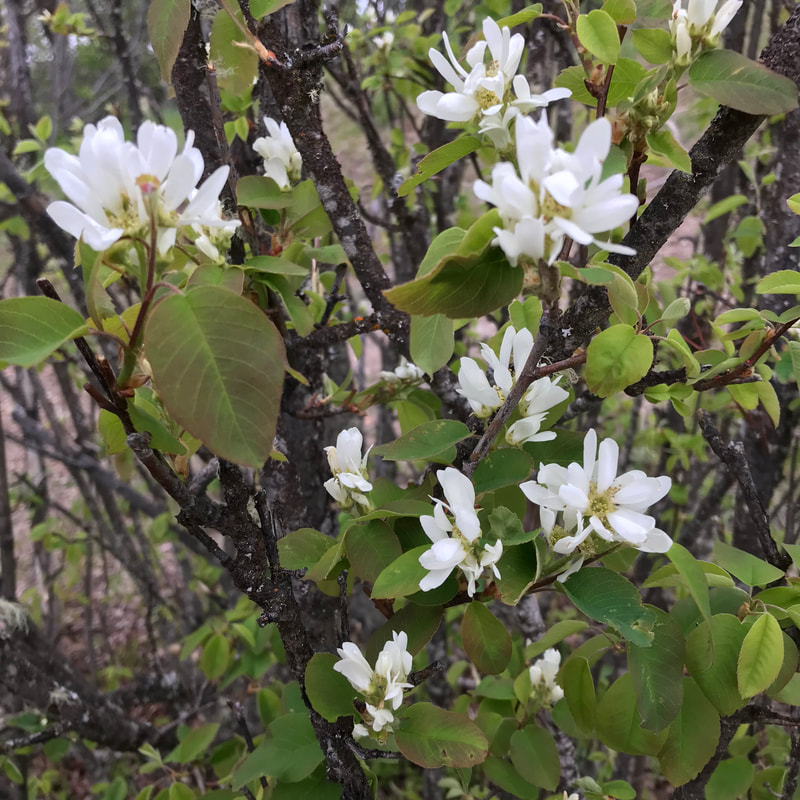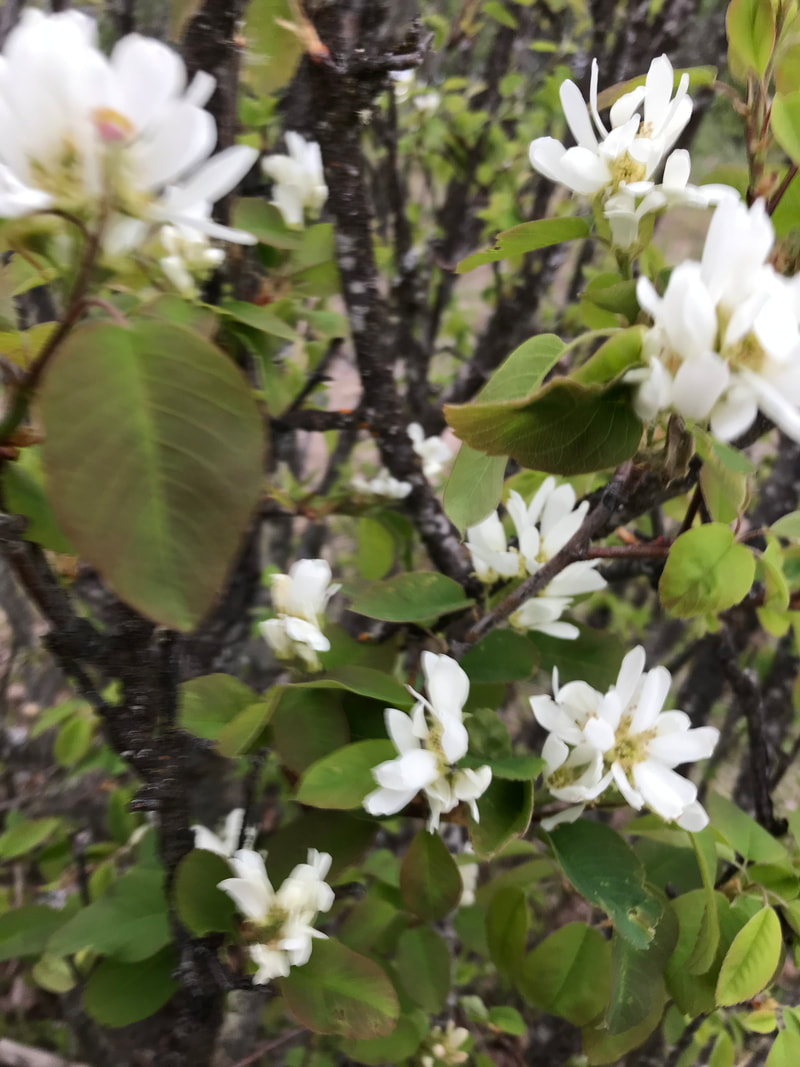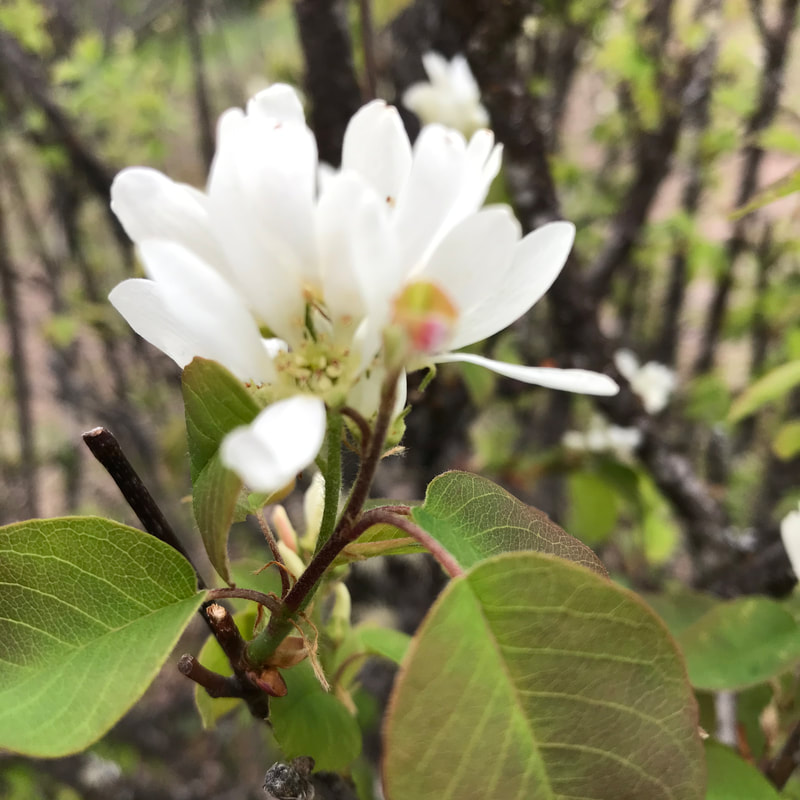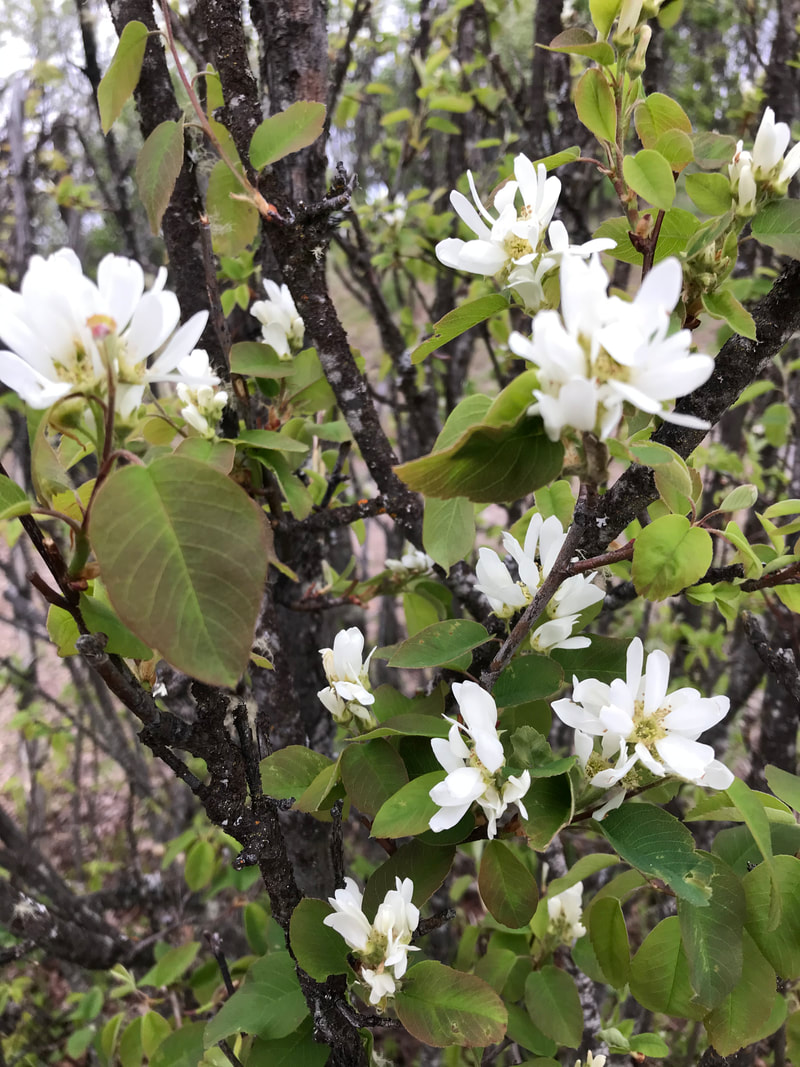SASKATOON. AKA ASAKATOON SERVICEBERRY, WESTERN SERVICEBERRY, JUNEBERRY
GENESIS NAME: Amelanchier anifolia
DISTRIBUTION: AK, CA, CO. IA, ID, MN, MT, ND, NE, NV, OR, SD, UT, WA, WY. CANADA...AB, BC, MB, ON, PE, SK, YT
SEASON: April, May, June
MEDICAL USE: Boiled cambium can be used as a disinfectant. Root infusions were used to prevent miscarriages. Juice was used to cure stomach ailments, and it is a mild laxative. Eye and eardrops were made from mature berries.
POISONOUS: Saskatoons contain cyanogenic glycosides (mostly in the seeds), which can become cyanide. ... Processed forms of cyanide have been used as deadly poisons at various times in world history. While those consequences should not be ignored or whitewashed, they do not represent cases of 'accidental' poisoning.
EDIBILITY: The fruit of this and related species are eaten fresh, prepared in puddings, pies, and muffins, and dried like raisins and currants. Indigenous people used the fruit in soups, stews, meat dishes, pemmican and dried cakes. ,They are high in many nutrients as well as fibre, protein and antioxidants.FEATURES: Arrows and pipe stems made from shoots.
LEAVES: The 3 to 6 cm long and 2 to 3 cm wide deciduous leaves are oblong, finely-toothed, rounded at base, and rounded at the apex with a small, sharp projection. There are 10 to 15 pairs of main veins. The young leaves are covered with a soft, fine hair and will become dark green and smooth with age.
FRUITS: Saskatoon, also known as serviceberry (Amelanchier sp.), has been an essential part of the Canadian prairie landscape and produce market for decades. Its bluish-purple fruits resemble blueberries but are more closely related to apples or pears.
DISTRIBUTION: AK, CA, CO. IA, ID, MN, MT, ND, NE, NV, OR, SD, UT, WA, WY. CANADA...AB, BC, MB, ON, PE, SK, YT
SEASON: April, May, June
MEDICAL USE: Boiled cambium can be used as a disinfectant. Root infusions were used to prevent miscarriages. Juice was used to cure stomach ailments, and it is a mild laxative. Eye and eardrops were made from mature berries.
POISONOUS: Saskatoons contain cyanogenic glycosides (mostly in the seeds), which can become cyanide. ... Processed forms of cyanide have been used as deadly poisons at various times in world history. While those consequences should not be ignored or whitewashed, they do not represent cases of 'accidental' poisoning.
EDIBILITY: The fruit of this and related species are eaten fresh, prepared in puddings, pies, and muffins, and dried like raisins and currants. Indigenous people used the fruit in soups, stews, meat dishes, pemmican and dried cakes. ,They are high in many nutrients as well as fibre, protein and antioxidants.FEATURES: Arrows and pipe stems made from shoots.
LEAVES: The 3 to 6 cm long and 2 to 3 cm wide deciduous leaves are oblong, finely-toothed, rounded at base, and rounded at the apex with a small, sharp projection. There are 10 to 15 pairs of main veins. The young leaves are covered with a soft, fine hair and will become dark green and smooth with age.
FRUITS: Saskatoon, also known as serviceberry (Amelanchier sp.), has been an essential part of the Canadian prairie landscape and produce market for decades. Its bluish-purple fruits resemble blueberries but are more closely related to apples or pears.
DESCRIPTION:
This species can be rooted from early spring hardwood cuttings or softwood cutting taken in the summer. Layering or separation of suckers from parent plants is another means of increase. Sow untreated seeds in fall or cold-stratified seed in spring.
This is typically an erect shrub, 3-18 ft. tall. In rich soils, a single trunk may develop and attain 30 ft. in height. Compact clusters of fragrant, white flowers emerge just before small, light-green, oval leaves appear. The small, sweet, blue berries ripen by early summer. Fall color is orange to red and takes place for long periods.
This is typically an erect shrub, 3-18 ft. tall. In rich soils, a single trunk may develop and attain 30 ft. in height. Compact clusters of fragrant, white flowers emerge just before small, light-green, oval leaves appear. The small, sweet, blue berries ripen by early summer. Fall color is orange to red and takes place for long periods.





